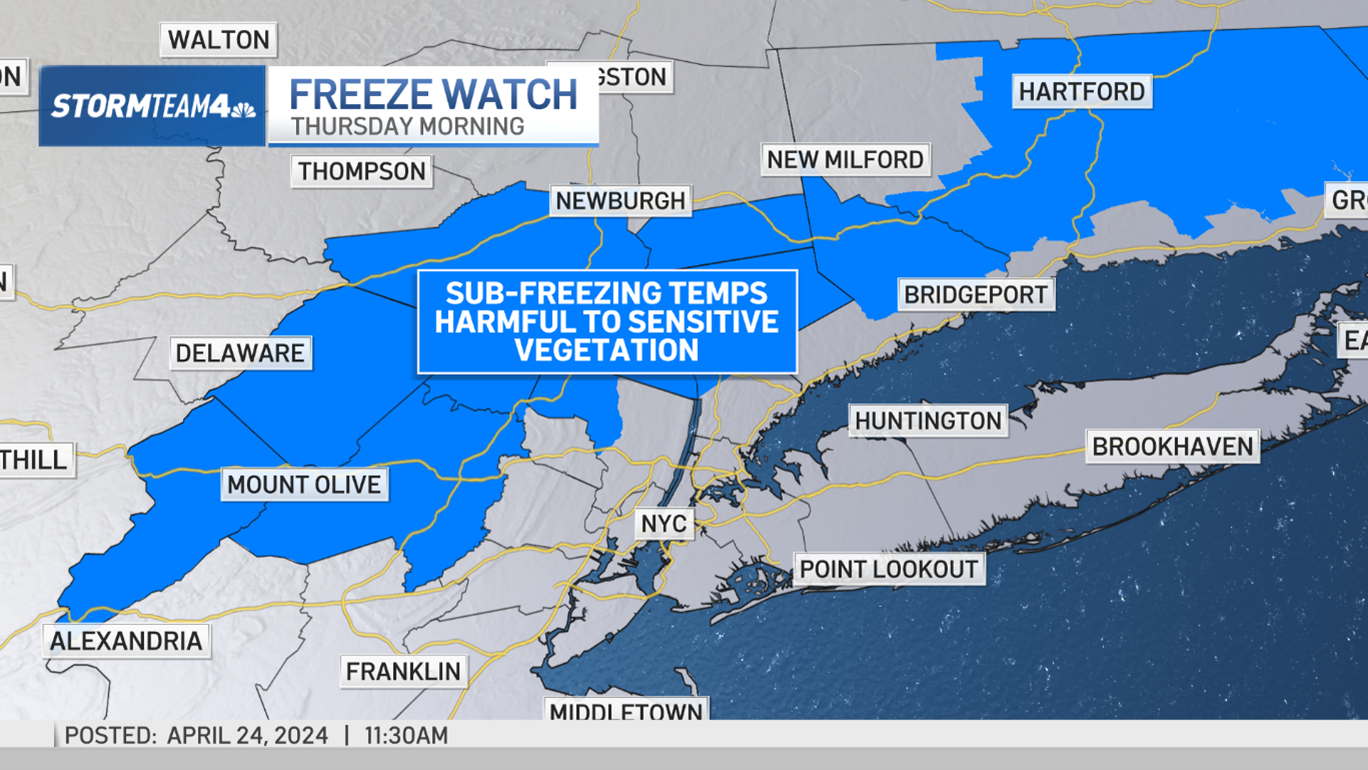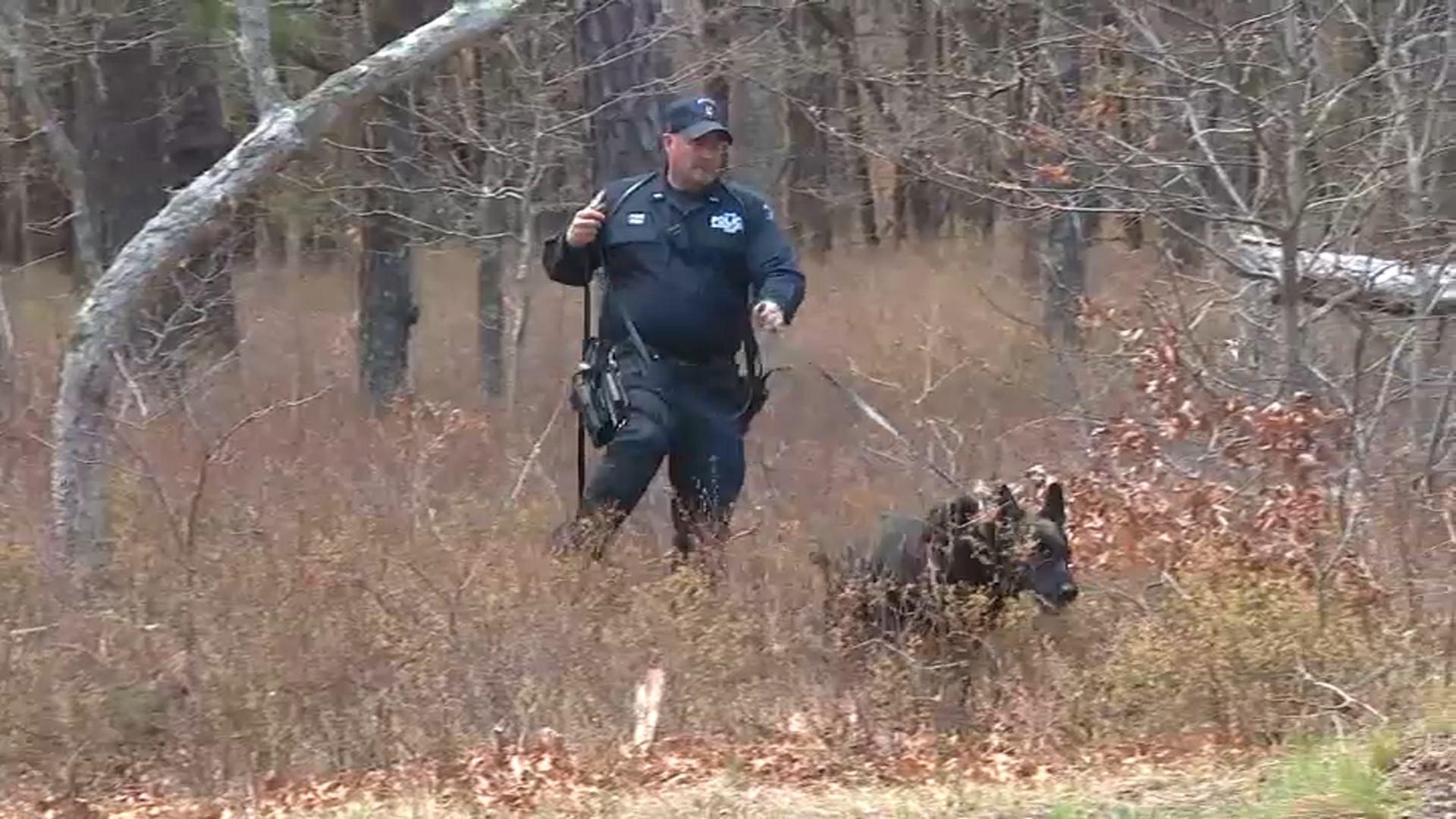Consolidated Edison urges the public to call authorities if they smell gas, but the utility -- and many others in our area -- decline to detail the locations of known, active gas leaks.
Since fixing every known leak would be too expensive, requiring pipes to be ripped up and replaced, utilities are allowed to backlog a certain number of leaks.
Last year, Con Edison reported a backlog of more than 800 non-hazardous leaks to the New York Public Service Commission, but the locations of those leaks are known only to Con Edison, which provides natural gas service to Manhattan, the Bronx and parts of Queens and Westchester . Even state regulators have no data indicating where the leaks are positioned along the network of underground gas mains and distribution lines.
Shanna Cleveland, an environmental lawyer with the Conservation Law Foundation, said sharing information about leak locations could help make the public more vigilant when they smell gas.
Local
"Giving people the information about leaks and making that information public creates an awareness and reminds them that they have a responsibility when they smell gas to call the gas company," Cleveland said.
Utilities and their regulators emphasize that not all gas leaks are dangerous. A natural gas leak is considered non-hazardous in New York if it is more than 5 feet away from a building and if the leaking gas has enough space to vent into the air. Immediate danger only emerges when leaking gas gets trapped and collects in a confined space. When that happens, a non-hazardous leak can quickly turn into an explosion risk.
After eight people died in a building explosion last month in East Harlem, several neighbors told reporters they smelled gas in the days preceding the blast. Both Con Edison and the FDNY said no one called to report a smell of gas until just minutes before the explosion.
The National Transportation Safety Board is investigating the blast. Con Edison has not disclosed whether any known, non-hazardous leaks exist on the distribution network anywhere near the site of the East Harlem explosion.
Mike Clendenin, a Con Edison spokesman, said the majority of leaks that are found through regular detection are minor and do not pose a threat to public safety. But he indicated, after the I-Team began asking questions, that the utility was working on a way to release information about leak locations.
"We want to allay any public concerns and will develop ways to make information about leak locations easily available to the public," he said.
Con Ed maintains an internal gas information system (GIS) with specific data about severity and locations of leaks, however New York's Public Service Commission does not require utilities to share that information.
Earlier this month, the I-Team found evidence of several natural gas leaks along Manhattan's East Side with a portable air quality detector.
Dr. Neal Phillip, chair of the Chemistry and Chemical Technology Department at Bronx Community College, calibrated the equipment and accompanied the I-Team during the survey.
A normal reading for methane, the primary component of natural gas, is 2 parts per million in New York City, Phillip said. When Con Edison surveyors detect 3 ppm on their equipment, an alarm goes off, and they start puncturing sidewalks and checking manholes to see if the gas is concentrated anywhere.
During the survey, the I-Team found the following elevated methane readings:
- 2.8ppm at the intersection of Second Avenue and 49th Street
- 3.8ppm at the intersection of Second Avenue and 42nd Street
- 2.8ppm at the intersection of Second Avenue and 40th Street
- 3.0ppm at the intersection of Lexington Avenue and 33rd Street
- 2.7ppm at the intersection of Second Avenue and 14th Street
Given that there is no natural source of methane on Manhattan’s East Side, Phillip said the elevated readings were most likely due to natural gas seeping upward from cracks or pinholes in the pipe infrastructure below the street.
"The main source of methane is landfills or cows, but we don't any cows in Manhattan. So it has to be some sort of leak or something of a pipe underground," Phillip said.
Leaks at those levels were not detectable by odor.
The I-Team shared the results of its leak survey with Con Edison. The utility has not indicated whether there are any known leaks near those intersections.
Other New York-area utilities refused to share leak locations with the public as well.
Karen Young, a spokeswoman for National Grid, declined to say where leaks on that utility's backlog are located. In an email Young wrote: "if a leak presents any potential public safety risk, it is addressed immediately. Some leaks are non-hazardous and do not require immediate repair."
Orange and Rockland Utilities elected to keep leak locations secret as well. Spokesman Mike Donovan said there are about 525 known leaks on the system, and the locations are not made public.
PSE&G reported a backlog of 1,933 non-hazardous leaks in New Jersey but spokeswoman Karen Johnson wrote in an email, "to provide a list of locations at any given time would not be beneficial and could cause unnecessary concern."
In Massachusetts, lawmakers recently voted to lift the veil of secrecy around the locations of gas leaks. A law passed by the state's House of Representatives would require that "each gas company shall report annually to the department [of public utilities] the location of each Grade 1, Grade 2, and Grade 3 leak."
Generally, gas leaks classified as grade 2 or 3 are considered non-hazardous and can wait months or even years before being repaired. Grade 1 leaks are considered potentially hazardous and usually require immediate repair.
Earlier this month, Con Edison supervisor John DiMiceli took the I-Team along as he surveyed Manhattan's East Side for leaks. Within minutes of beginning the trip, DiMiceli found a grade 1 leak of 3 ppm near Third Avenue and 17th Street in Manhattan.
With an air quality detector, he sampled a pocket of air under the sidewalk that was 40 percent methane. That sample was less than 5 feet from a residential tower, making the leak a grade 1. Immediately, DiMiceli summoned repair crews to locate and fix it.
Last month, the Conservation Law Foundation used data provided by the Massachusetts Department of Public Utilities to construct a map to pinpoint locations of thousands of unrepaired leaks. Almost all were grade 2 and grade 3.
Despite concerns from utilities about causing alarm, Cleveland said publishing the map of leak locations has not caused unnecessary alarm in Massachusetts.
"From our map, we haven't had any folks calling in in a panic," she said. "Instead what we've had is legislators and members of the public beginning to realize this is an issue that they need to pay attention to."



